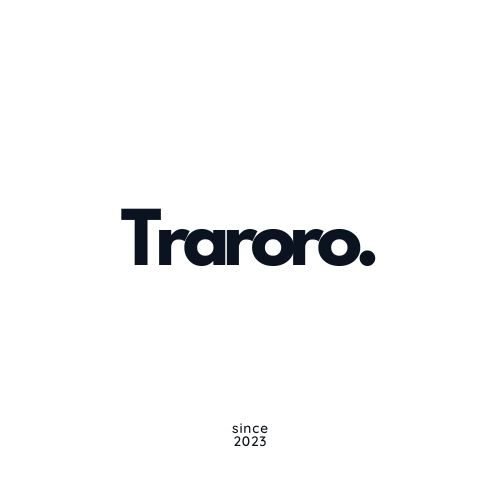
Attention, all K-Pop enthusiasts! Prepare to immerse yourselves in the vibrant world of New Jeans, the sensational K-Pop group that emerged onto the scene in July 2022. In this exploration, we’ll dive deep into the heart of New Jeans’ allure, delving into their captivating fusion of Y2K fashion revival, the influence of Japanese street fashion, and a melodious journey that pays homage to the enchanting sounds of the early 2000s. Get ready for an exhilarating voyage through time, style, and music as we unveil the enigmatic phenomenon that is New Jeans.
The New Jeans Sensation
In July 2022, a fresh K-Pop force emerged—New Jeans. Their debut single “Attention” swiftly captured the global spotlight, soaring to the No.1 spot on the iTunes Top Album charts in nine countries and clinching the No.10 position in the USA. Their Spotify streams have already surpassed a remarkable nine million, with the chart-topping track “Attention” amassing a staggering 48 million streams. What’s truly astounding is that these achievements were accomplished despite the youthfulness of the idols. This phenomenal rise underscores the universal appeal of their music and the fervor they’ve ignited across the globe.
The Multi-Faceted Name: New Jeans
Beyond being a catchy name, “New Jeans” holds a deeper significance. It cleverly plays on “new genes,” symbolizing the dawn of a fresh era in the realm of K-Pop. Just as a pair of new jeans is versatile, adaptable, and perennially stylish, New Jeans’ music embodies the same qualities—fluidity, adaptability, and a timeless essence.
Meet the Radiant Members
The vibrant quintet comprising New Jeans—Minji, Hanni, Danielle, Haerin, and Hyein—brings unique colors to the group’s canvas. United under the banners of ADOR and HYBE Labels, these individual stars coalesce to create an intoxicating symphony of talent that resonates with fans around the world.
Min Heejin: The Architect of Success
The creative genius propelling New Jeans to unparalleled heights is Min Heejin, the former Creative Director of SM Entertainment. With an illustrious career spanning over two decades, she took the helm as Chief Brand Officer at BigHit Entertainment (now HYBE) in 2019. Her recent ascent to the CEO role at HYBE’s sub-label, Ador (All Doors One Room), fortified her position as the driving force behind New Jeans—a groundbreaking venture that places her at the forefront of HYBE’s pioneering girl group. Min Heejin’s fusion of experience and creativity has propelled New Jeans into the stratosphere of K-Pop glory.
Y2K Revival: A Leap into the Past
Enter New Jeans, the mesmerizing K-Pop sensation that ingeniously incorporates the resurgent Y2K fashion into their stylistic narrative. With their daring ensembles and bold silhouettes, New Jeans pays homage to an era characterized by exuberance, versatility, and an unapologetic embrace of unique aesthetics. By fusing this iconic fashion trend with their music and persona, New Jeans not only resurrects the Y2K spirit but elevates it to new heights, capturing the hearts of both devoted fans and fashion connoisseurs.
So, what is Y2K Fashion?
The Y2K fashion revival, a captivating current in the ever-evolving stream of fashion trends, transports us to an era that straddles the late 1990s and the early 2000s. This phenomenon, characterized by an intoxicating blend of futuristic experimentation and unabashed nostalgia, rekindles the sartorial essence of an era that was defined by both the promise of technological innovation and the irreverent audacity of self-expression. To fully comprehend the allure of the Y2K revival, it’s essential to delve into its origins, track its trajectory, and explore the driving forces that catapulted it back into the mainstream fashion consciousness.
The term “Y2K” itself is an abbreviation for “Year 2000,” a moniker closely tied to the anxieties surrounding the transition from the 20th to the 21st century. As this transition loomed, cultural expressions naturally manifested in the realm of fashion, sparking the creation of Y2K fashion. This unique style can be traced back to the late 1990s when the world was on the cusp of a new millennium, pulsating with a sense of both apprehension and excitement.
The Y2K fashion revival found its roots in a confluence of factors, most notably the rapid advancement of technology and its pervasive influence on popular culture. The late 1990s witnessed an explosion of innovations in computing, communication, and digital media, profoundly altering the ways in which people interacted with the world. This newfound technological exuberance seeped into the realm of fashion, giving rise to bold experimentation with futuristic fabrics, metallic finishes, and unconventional silhouettes that mirrored the era’s tech-driven aspirations.
Y2K fashion, however, was not confined solely to the realm of technological aesthetics. It was an amalgamation of diverse influences that captured the spirit of the time. Elements of grunge, rave culture, pop, and hip-hop styles converged in a sartorial melting pot that transcended boundaries. It was an era of sartorial liberation, where individuals felt emboldened to embrace a multiplicity of styles, creating an eclectic blend that was uniquely their own.
The resurgence of Y2K fashion owes much to the digital age, where social media platforms like Instagram, TikTok, and Pinterest have provided a global platform for fashion enthusiasts to showcase their ensembles and revive long-forgotten trends. This digital landscape fosters a sense of community, where enthusiasts collaborate, inspire, and challenge each other to reimagine Y2K aesthetics in contemporary contexts. The visual allure of Y2K fashion, with its bold colors, unconventional accessories, and audacious prints, lends itself perfectly to the visually-driven world of social media.
Japanese Street Fashion Fusion: An Eclectic Euphony
Besides the Y2K Fashion, the fusion of New Jeans with Japanese street fashion is a transcendent synergy, celebrating individuality, audacity, and cultural diversity. The group’s audacious blending of textures, patterns, and aesthetics channels the spirit of Harajuku, embracing the same ethos of self-expression that propels Japanese street fashion into the limelight.
Japanese street fashion, an electrifying blend of artistic expression and cultural dynamism, has long captivated enthusiasts across the globe. Originating in the vibrant streets of Tokyo, this fashion movement transcends mere clothing—it’s a statement, an attitude, and an embodiment of individualism. The essence of Japanese street style is its audacity to disregard convention, embracing a symphony of textures, colors, and patterns that shatter traditional norms.
Emerging in the 1980s, Japanese street fashion became a canvas for self-expression, subversion, and cultural exploration. Harajuku, Tokyo’s iconic district, emerged as a crucible of avant-garde fashion, a realm where creativity knows no bounds. Styles like “Lolita,” characterized by Victorian and Rococo influences, “Gothic,” known for its dark, romantic aesthetic, and “Decora,” boasting vibrant colors and excessive accessories, showcase the diversity that defines Japanese street fashion.
In the digital age, the proliferation of social media platforms has thrust Japanese street fashion onto the global stage, erasing geographical boundaries and sparking international fascination. Influencers and enthusiasts worldwide are drawn to its kaleidoscope of styles, propelling it from the streets of Tokyo to the closets of fashion enthusiasts worldwide.
Musical Magic: Nostalgia for the 2000s
In terms of their music, New Jeans embarks on a musical odyssey that pays homage to these diverse influences while infusing their unique charm. Their artistry evokes the spirit of an era when music was an exploration, a voyage into uncharted territories where boundaries were blurred, and creativity reigned supreme.
The 2000s marked an era where music was not confined by genre or convention. Pop megastars like Britney Spears, NSYNC, and Destiny’s Child dominated the airwaves, their infectious melodies and captivating performances defining the era’s pop culture. Simultaneously, hip-hop and R&B luminaries like Jay-Z, Beyoncé, Usher, and Alicia Keys spearheaded a sonic revolution, blending soulful vocals with urban rhythms..
The resonance of the 2000s within New Jeans’ music serves as a bridge between the past and the present, evoking feelings of nostalgia while infusing fresh energy. The group’s melodies carry traces of the carefree optimism that characterized the 2000s, reflecting a time when musical experimentation knew no limits. In the alchemy of sound, New Jeans curates an experience that taps into listeners’ memories, inviting them to traverse the corridors of time. The familiarity of the 2000s melodies merges seamlessly with the distinct vocals and artistic vision of New Jeans, resulting in a musical alchemy that is both evocative and innovative.
As New Jeans revitalizes the nostalgia of the 2000s, they become custodians of an era’s sonic essence, invoking an emotive resonance that bridges generations. Their music transcends time, intertwining the melodies of yesterday with the spirit of today, crafting a sonic legacy that reverberates across hearts and ears alike. With every note they strike and every chorus they sing, New Jeans conjures the musical magic of the 2000s, uniting the past and the present in a harmonious tapestry that continues to enchant and captivate.
Conclusion: Bridging the Past and Present
In the symphony of fashion, music, and cultural crosscurrents, New Jeans emerges as a veritable maestro, orchestrating a harmonious fusion that resonates across eras and continents. The Y2K revival and the infusion of Japanese street style are not mere stylistic choices—they are tributes to the past, salutations to the present, and odes to the future. As New Jeans navigates these multifaceted influences, they carve a legacy that reverberates through fashion, music, and cultural dialogue. With every chord they strike and every ensemble they adorn, New Jeans weaves a tapestry that captures the imagination, transcending trends to craft a timeless and indelible mark on the world of K-Pop.


